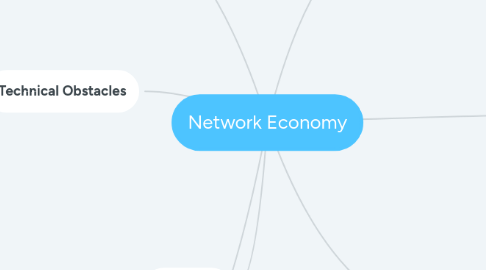
1. Network Externalities: "When the value of a technology, product, or service depends upon the number of other entities using it, the phenomenon is called network externality".
1.1. There are both Positive and Negative Externalities.
1.1.1. Positive: As the number of users increases, which in return increases revenue for certain companies and then potentially make items more accessible for the average consumer.
1.2. Also allows for a wider feedback range that can provide insight into the next product build/revamp.
1.2.1. Negative: It is similar to positive, yet with the opposite effect. With dwindling numbers of users, companies then must focus on the areas of improvement in order to sustain a profitable business model.
2. Technical Obstacles
2.1. With positive and negative feedback from consumers, companies are able to project what areas they require more focus on, and ultimately crafting a more robust product.
2.1.1. Many companies focused on innovation and creating the next generation product.
2.1.2. "The technical obstacles you’ll face have to do with the need to develop a technology that is at the same time compatible with, and yet superior to, existing products". Shapiro, Carl; Varian, Hal R.. Information Rules
2.2. Use Creative Design: Improve design and feature sets to allow for a fair competition against other products in the marketplace.
3. Freemium
3.1. Is a strategy that companies use to price their software/hardware accordingly, but there being additional features for a price.
3.1.1. What does this strategy accomplish? Companies are able to encourage consumers with a "free" version of their product, yet with limited features.
3.1.2. This in return allows for consumers to potentially purchase the paid "full version" of said software.
4. Lock-in
4.1. There are many reasons why consumers opt in for "lock-in" pricing on a certain service.
4.1.1. Lower Prices
4.2. Does not allow for a user to easily migrate off their "locked-in" pricing and go onto the next competitors options.
4.2.1. Guaranteed Service Level Agreements and Product Availability.
4.3. "Lock-in arises whenever users invest in multiple complementary and durable assets specific to a particular information technology system". Shapiro, Carl; Varian, Hal R.. Information Rules
5. Positive Feedback
5.1. Positive Feedback is one of the many key elements in a Network Economy. The main reason is because in the realm of Information Technology, feedback on products is crucial to the growth of a product and or service.
5.2. Allows for consumers to bring forth recommendations for said product/service and increase their customer pool.
5.2.1. Positive feedback should not be confused with growth as such. Shapiro, Carl; Varian, Hal R.. Information Rules
6. Negative Feedback
6.1. Decreases the value of a product as the number of users decreases. It remains imperative that companies focus on their areas of improvement.
6.2. " In a negative-feedback system, the strong get weaker and the weak get stronger, pushing both toward a happy medium. Shapiro, Carl; Varian, Hal R.. Information Rules
7. Versioning
7.1. This allows for companies to release products to a wide range of consumers, along with product enhancement and availability in general within the competition.
7.1.1. "principles behind creating profitable product lines that target different market segments". Shapiro, Carl; Varian, Hal R.. Information Rules
7.1.2. “version” information goods to make them appeal to different market segments which will pay different prices for the different versions". Shapiro, Carl; Varian, Hal R.. Information Rules

